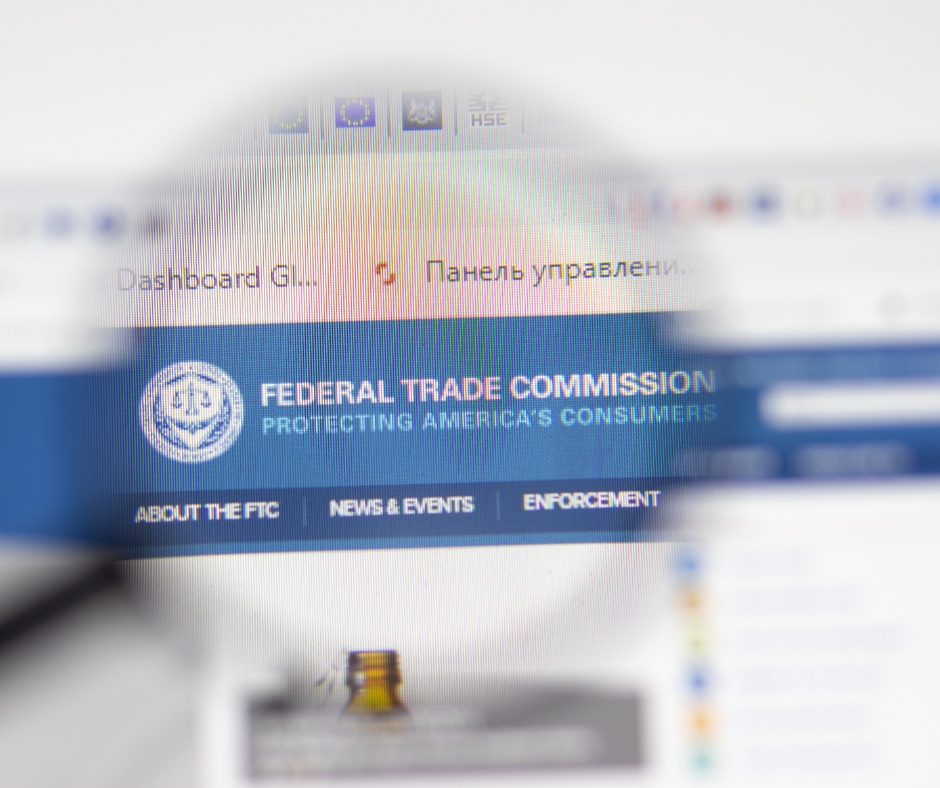
FTC Safeguards Rule – 6 Steps to Comply with the FTC
The Federal Trade Commission (FTC) is an independent agency of the United States government that is responsible for enforcing various consumer protection and antitrust laws. In 2003, the FTC implemented the Safeguards Rule, which is a set of regulations designed to help businesses protect sensitive customer information from identity theft and other types of fraud. In this blog post, we will explore the key components of the FTC Safeguard Rules and explain how they can benefit businesses and consumers alike.
The new deadline for compliance is June 9, 2023. The FTC Safeguards Rule addresses the safeguards and protections that financial institutions are required to have in place to protect their consumer financial data and other sensitive information
What are the Safeguards Rules?
The FTC Safeguard Rules are a set of regulations that require businesses to implement a comprehensive information security program to protect sensitive customer information. The rules apply to any business that collects, stores, or shares customer information, regardless of the size of the business or the industry in which it operates. This includes financial institutions, healthcare providers, retailers, and any other business that collects personal or financial information from its customers.
The Safeguards Rule is based on the Gramm-Leach-Bliley Act (GLBA), which is a federal law that requires financial institutions to protect the privacy of their customers’ personal and financial information. However, the Safeguard Rules expand upon the GLBA by applying it to all businesses that collect customer information, not just financial institutions.
 What Does the Safeguards Rule require?
What Does the Safeguards Rule require?
The Safeguards Rule requires businesses to implement a comprehensive information security program that includes the following components:
- Conduct a risk assessment: Businesses should conduct a thorough assessment of the risks to the security, confidentiality, and integrity of consumer information in their possession. This includes identifying the types of information collected, where it is stored, who has access to it, and how it is protected.
- Design and implement an information security program: Based on the risk assessment, businesses should design and implement a comprehensive information security program that includes administrative, technical, and physical safeguards. The program should be regularly reviewed and updated as necessary.
- Train employees: Businesses should train their employees on the importance of data security and their roles and responsibilities in protecting consumer information. This includes training on how to recognize and report potential security incidents.
- Monitor and test the program: Businesses should regularly monitor and test their information security program to ensure that it is effective and up-to-date. This includes conducting vulnerability assessments, penetration testing, and other forms of testing to identify and address weaknesses.
- Maintain written documentation: Businesses should maintain written documentation of their information security program, including policies, procedures, and risk assessments. This documentation should be regularly reviewed and updated as necessary.
- Respond to security incidents: Businesses should have a plan in place to respond to security incidents, including procedures for notifying affected consumers and regulatory agencies, and for investigating and remediating the incident.
In addition to these requirements, the FTC Safeguard Rules also require businesses to provide their customers with clear and conspicuous notice of their privacy policies and practices. This notice must include information about the types of customer information that the business collects, how the business uses and shares this information, and what measures the business takes to protect this information.
What are the benefits of the FTC Safeguards Rule?
The Safeguards Rule provides a number of benefits for both businesses and consumers. For businesses, implementing a comprehensive information security program can help protect against identity theft and other types of fraud, which can save the business money in the long run. It can also help businesses comply with other privacy and data security regulations, such as the General Data Protection Regulation (GDPR) in the European Union.
For consumers, the Safeguards Rule provides increased protection for their personal and financial information. By requiring businesses to implement a comprehensive information security program, the Safeguard Rules help ensure that sensitive customer information is protected from unauthorized access, use, or disclosure. This can help reduce the risk of identity theft and other types of fraud, which can be a major source of stress and financial hardship for consumers.
 What are the penalties for non-compliance with the FTC Safeguards Rule?
What are the penalties for non-compliance with the FTC Safeguards Rule?
Businesses that fail to comply with the Safeguards Rule can face significant penalties, including fines and legal action. The FTC can also require businesses to implement additional safeguards and take other corrective actions to address any violations of the Safeguard Rules.
In addition to these penalties, non-compliance with the Safeguards Rule can also damage a business’s reputation and lead to a loss of customers. In today’s digital age, consumers are increasingly aware of the importance of protecting their personal and financial information and are more likely to take their business elsewhere if they do not feel that a particular business is taking adequate steps to protect their information.
Conclusion
The FTC Safeguards Rule is an important set of regulations that help protect consumers’ personal information and reduce the risk of data. By requiring certain businesses to implement reasonable safeguards to protect sensitive consumer information, the FTC is helping to ensure that businesses take data security seriously and are held accountable if they fail to do so.
To comply with the FTC Safeguards Rule, businesses should conduct a risk assessment, design and implement an information security program, train employees, monitor and test the program, maintain written documentation, and have a plan in place to respond to security incidents.
While complying with the FTC Safeguards Rule may require some time and resources, it is an important investment in both the security of consumers’ personal information and the long-term success and reputation of the business. By demonstrating a commitment to data security and protecting consumers’ personal information, businesses can build trust with their customers and stakeholders and avoid costly legal and financial consequences associated with data breaches.


